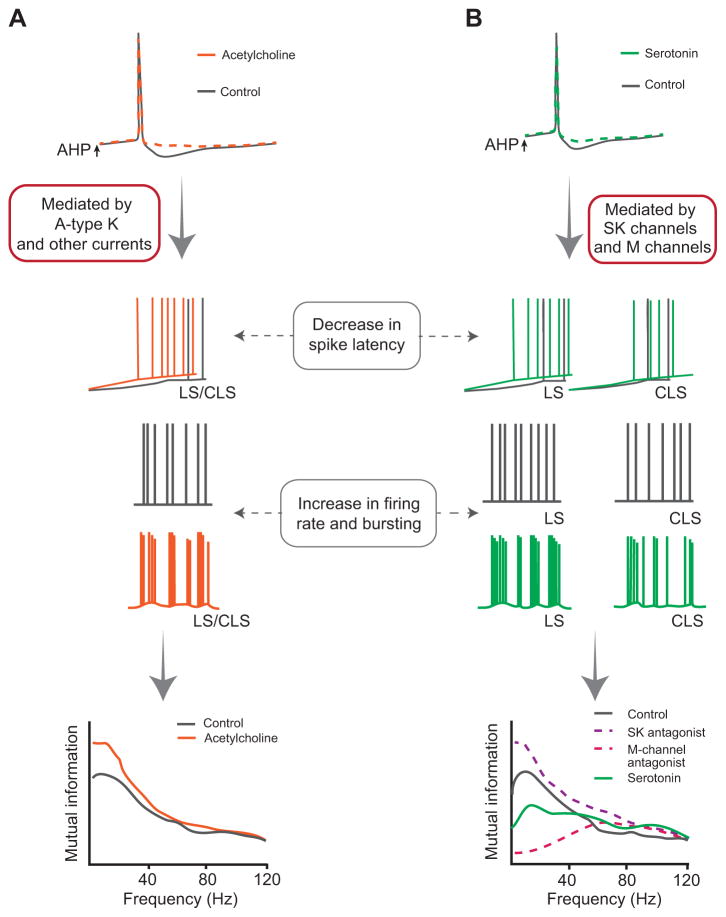Fig. 3.
Schematic representation of the effects of acetylcholine and 5-HT on the pyramidal cells of the ELL. (A) Application of an acetylcholine agonist decreases the spike afterhyperpolarization (AHP) of pyramidal cells. By acting on an A-type potassium current, it also decreases first-spike latency and increases the firing rate as well as burst firing. As a consequence, the response to low-frequency (<40Hz) sensory stimuli is enhanced as quantified by mutual information (Ellis et al., 2007a). (B) Application of 5-HT onto pyramidal cells also reduces the spike AHP, but this effect is mediated by the downregulation of SK channels and the downregulation of M-type channels. The downregulation of these two channels also significantly decreases spike latency and significantly increases the firing rate as well as burst firing, but the overall effect on information transmission is a whitening of the mutual information curves (Deemyad et al., 2011). Blocking either M or SK channels leads to opposite effects on information transmission (Deemyad et al., 2012). M-channel blockage decreases low-frequency responses while slightly increasing high-frequency responses. SK-channel blockade increases low-frequency responses (Deemyad et al., 2011).

